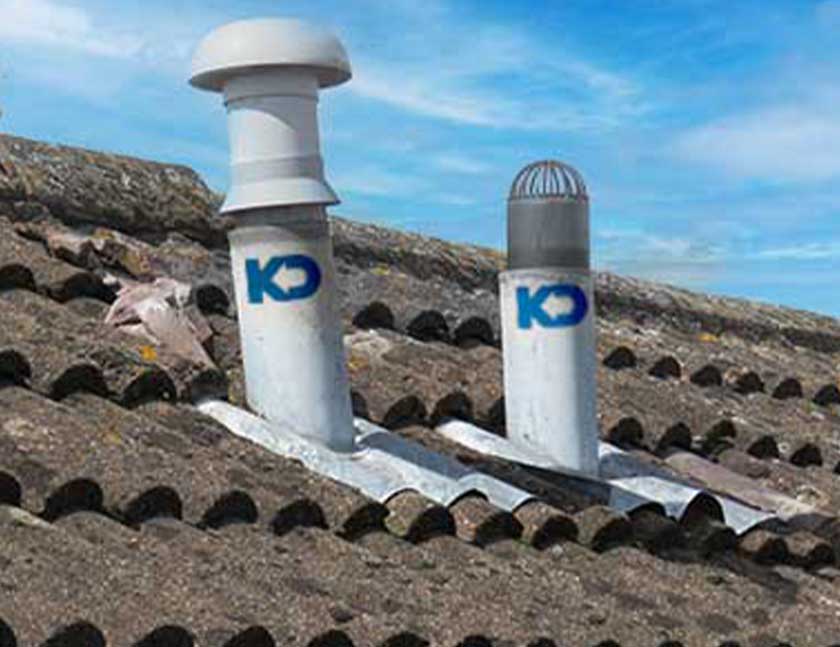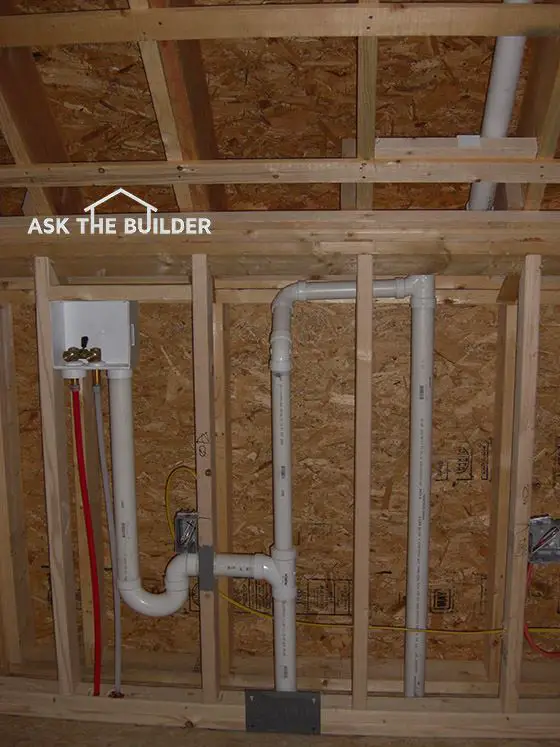They are making several good observations related to The Upsides of Proper Ventilation in Plumbing Design as a whole in this post underneath.

Appropriate air flow in pipes systems is frequently forgotten, yet it is essential for maintaining the functionality and safety and security of your home's pipes. Air flow helps manage air pressure, stop the buildup of damaging gases, and make certain the efficient removal of waste. In this overview, we will certainly explore the importance of appropriate plumbing air flow, exactly how it works, and the benefits it gives your pipes system.
Comprehending Ventilation in Plumbing
Air flow in plumbing refers to the network of pipes that enable air to move with the drainage system. These vents offer several objectives, consisting of regulating air pressure within the pipelines, protecting against drain gases from entering the home, and helping in the smooth flow of wastewater.
Exactly How Ventilation Functions in Pipes Solutions
Atmospheric Pressure Regulation
Appropriate ventilation keeps well balanced atmospheric pressure within the plumbing system. When water moves through pipelines, it displaces air. Without ample air flow, this displacement can create unfavorable stress, causing slow down drains or siphoning of water from traps, which can cause unpleasant smells to permeate into the home.
Protecting Against Sewer Gas Build-up
One of the most crucial functions of pipes vents is to stop sewer gases, such as methane and hydrogen sulfide, from collecting within the home. These gases can posture serious wellness dangers and are very combustible. Vent pipelines permit these gases to escape securely outdoors.
Assisting in Waste Elimination
Air flow helps in the efficient removal of wastewater by avoiding airlocks in the drain system. When air can flow easily with the vents, it permits water and waste to flow efficiently via the pipes, decreasing the risk of obstructions and backups.
Sorts Of Plumbing Vents
Main Stack Vent
The main pile air vent, additionally referred to as the air vent stack, is the key vent in a plumbing system. It prolongs from the main drainpipe line up with the roof, enabling gases to get away and fresh air to enter the system.
Branch Vent
Branch vents connect to the major pile vent and serve private fixtures, such as sinks, toilets, and showers. These vents make sure that each fixture has ample ventilation to function correctly.
Air Admission Shutoff (AAV).
An Air Admittance Valve (AAV) is a one-way valve that allows air to go into the pipes system without the need for a traditional vent pipeline prolonging with the roof covering. AAVs are generally used in restorations or areas where setting up a conventional air vent is impractical.
Indications of Poor Air Flow in Pipes.
Slow Draining Fixtures.
If your sinks, bathtubs, or commodes are draining slowly, it could be an indication of bad ventilation. Poor air circulation can develop a vacuum cleaner impact, making it hard for water to drain appropriately.
Gurgling Seems.
Gurgling audios originating from drains pipes are usually an outcome of air being drawn through water traps as a result of adverse stress in the pipelines. This is a clear indicator of not enough air flow.
Unpleasant Odors.
Drain odors inside your home are a red flag that your plumbing system is not correctly ventilated. This could imply that sewage system gases are not being effectively aired vent outside, leading to potentially harmful problems.
Typical Air Flow Errors.
Inadequate Vent Sizing.
Making use of undersized air vent pipes can lead to bad air flow and pressure discrepancies in the system. It's necessary to utilize vents that satisfy the specific needs of your pipes system.
Improper Vent Placement.
Putting vents also much from the components they serve can minimize their efficiency. Proper placement makes certain that air can move freely and successfully via the system.
Disregarding Code Requirements.
Building regulations offer details standards for pipes air flow. Neglecting these codes can result in a system that falls short to function properly and may result in pricey fixings or carcinogen.
Advantages of Proper Ventilation.
Improved System Effectiveness.
Appropriately ventilated plumbing systems run more efficiently, with less clogs, faster draining, and much less strain on the pipes. This effectiveness extends the life expectancy of the pipes system.
Improved Air Top Quality.
By preventing sewer gases from entering your home, proper air flow adds to much better interior air high quality, making your living setting healthier and extra comfy.
Preventing Water Damages.
Adequate air flow aids avoid water from being siphoned out of catches, which can bring about sewage system gases going into the home and causing water damages in time.
Actions to Guarantee Proper Ventilation.
Consulting Plumbing Codes.
Constantly seek advice from regional plumbing codes when designing or modifying your plumbing system. These codes provide the necessary guidelines for appropriate airing vent and ensure your system meets security standards.
Routine Examination and Upkeep.
Normal assessments can help determine potential air flow problems before they become major issues. Upkeep tasks, such as cleaning up air vent pipes and looking for blockages, are necessary for keeping the system in good working order.
Expert Setup.
For new installations or major adjustments, it's smart to employ a professional plumbing professional. They have the knowledge to make certain the air flow system is correctly made and mounted according to code.
Final thought.
Correct air flow is a crucial element of any pipes system, making certain that it works effectively and safely. By recognizing the relevance of air flow, recognizing the signs of inadequate ventilation, and taking actions to keep your system, you can prevent pricey concerns and secure your home's air quality.
4 Things You Should Know About Your Plumbing Vents
What Plumbing Vents Are
Also called a vent stack, a plumbing vent is a vertical pipe attached to your drain line that runs through your roof. The plumbing vent pipe, or plumbing air vent, removes gas and odors from your plumbing system and allows fresh air to enter the pipes, helping the water to flow out of the drain pipes.
What Plumbing Vents Do
Plumbing vents have two basic functions. One of which is to allow unpleasant smelling wastewater and sewer gasses to escape your plumbing system instead of entering your home. Plumbing vent pipes are typically located on roofs, away from windows, to ensure the fumes exit the home completely.
The other function of the plumbing vent is to move fresh air into your plumbing system. This helps move water through every plumbing fixture in your house, like toilets and sink drains. Think of the way in which you need to let a little air into the bottle as you pour soda in order to make the drink flow smoothly.
Different Types of Plumbing Vents
True vent: This is the most common vent option. In simplest terms, a true vent is a vertical pipe attached to your drain line that exits through the roof. They often function as the main vent that other fixtures can connect to. Re-vent pipe or auxiliary vent: Attached to the drain line near specific plumbing fixtures, re-vent pipes run up and over to connect to the main vent. Common vent: Two plumbing fixtures installed on opposite sides of a wall are typically tied into the vent stack using something known as a sanitary cross. Wet vent: This venting option operates as a drain pipe and a vent at the same time. Wet vent drainage systems drain water from one fixture while venting the air from another. Although they’ve been used for over 100 years, wet vent systems have only recently been added to the plumbing code in many areas. If you’re planning on installing one in a bathroom remodel, make sure you check your local code prior to construction. Loop vent: For free-standing fixtures like kitchen island sinks, loop vents are ideal. These vent pipes run under the floor, rise from the P-trap, and create a loop inside the cabinet sink. Air admittance valve: An AAV is a one-way mechanical valve typically installed at the site of the plumbing fixture. AAVs allow venting to occur without having to tie into a larger venting system. They’re ideal for venting fixtures where you aren’t able to easily connect to an existing vent system. Common Plumbing Vent Issues
Although vent pipes typically don’t have water flowing through them, they’re still subject to many typical plumbing issues. For example, clogs are one of the most common problems associated with sewer vent pipes. If your vent pipe gets clogged, all of your plumbing fixtures tied into the vent stack will be affected.
A sink with a slow drain that bubbles and gurgles or a strong sewage smell around your toilet are both indicators that your toilet vent pipe is clogged. Because most vent pipes exit through the roof, old leaves, twigs or even a bird’s nest could be clogging the pipe.
Clogs in your vent pipe system cause a buildup of negative pressure, meaning that water won’t be able to flow out of your home very well. It’s similar to putting your finger over the opening of a straw to trap water inside. When you remove your finger, the water is able to flow out of the straw.
If you suspect you have any blockage in your vent, make sure you have a professional come examine the situation. Left unchecked, a blocked air vent can lead to other costly repairs, like leaks and sediment buildup.
Under Pressure
Pipe vents are essential aspects of a home’s plumbing system. Owning a home means learning about all sorts of things you never put much thought into before. But by understanding as much as you can about the important systems of your home, you can keep those budgets intact and those anxiety levels low.
https://www.homeserve.com/en-us/blog/home-improvement/plumbing-vents/

Do you appreciate reading about ? Place feedback below. We will be glad to know your thinking about this blog post. We are looking forward to see you back again later on. Those who appreciated our blog entry plz make sure you remember to share it. Many thanks for your time. Revisit us soon.
Check It Out